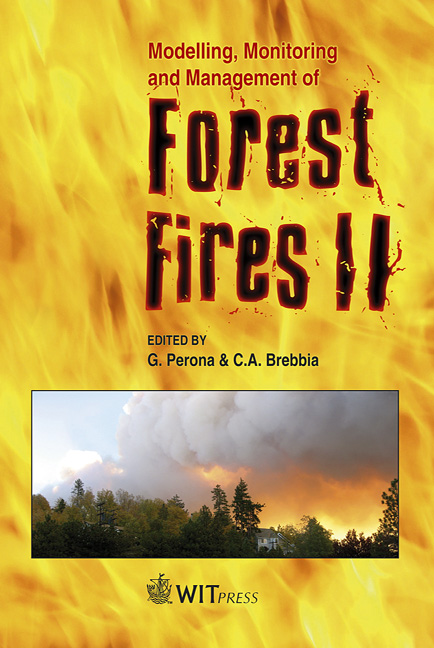Forest Fires, Risk And Control
Price
Free (open access)
Transaction
Volume
137
Pages
13
Page Range
233 - 245
Published
2010
Size
762 kb
Paper DOI
10.2495/FIVA100211
Copyright
WIT Press
Author(s)
H. Azari
Abstract
Fire is known as a primitive and amazing effect of nature and for humans it can be a friend, source of light and heat. Human intervention and ignoring nature’s rules can lead to an out of control forest fire, changing its face into an uncontrollable force. Through the thesis work, more than 450 articles, scientific papers, and web-pages have been studied and reviewed to find points and comments that might help to reduce the fire occurrence probabilities, fire aggression, and damage to people, the environment, and the economy. Ten years of work experience in industrial safety and fire fighting has been applied to new findings in the field of forest fires. There are many points and comments reviewed in the thesis document and here through this paper some specific results are been discussed. The introduction of the concept of layer protection to this study has been attempted, in which preventive and remedial measures are the two main schemes for reducing unwanted incidents and their probable consequences. To prevent the risk, deviation should be indicated, while before that it is necessary to set main roles or standards. In this situation, failure-elimination is the first step toward layer protection, and failure-control would be placed in the next layer. To reduce the consequences of failure, the last layer should be carefully positioned. According to findings during the survey, a suggestive concept has been recommended according to zoning theory, which fragments high-fire-risk forests to limit the fire aggression. A safety swath network is recommended based on this theory, with flexible width suggested of between 30 and 70 meters. This safety network could be augmented by a specified grid of a water mist network with the ability of humidifying approximately 100 meters of another zone with the application of a mobile sprinkler system. For populated areas, such as camping sites, a safety boundary has been proposed to isolate these risky areas from the forest. There are always activities that can stop autonomous disasters or reduce their consequences; our task is to find these activities and adhere to them. The aim of the study is to
Keywords
layer protection, preventive and remedial measures, passive and active protection, zoning theory, safety swath network, safety mound network, safety boundary rand, water mist network





